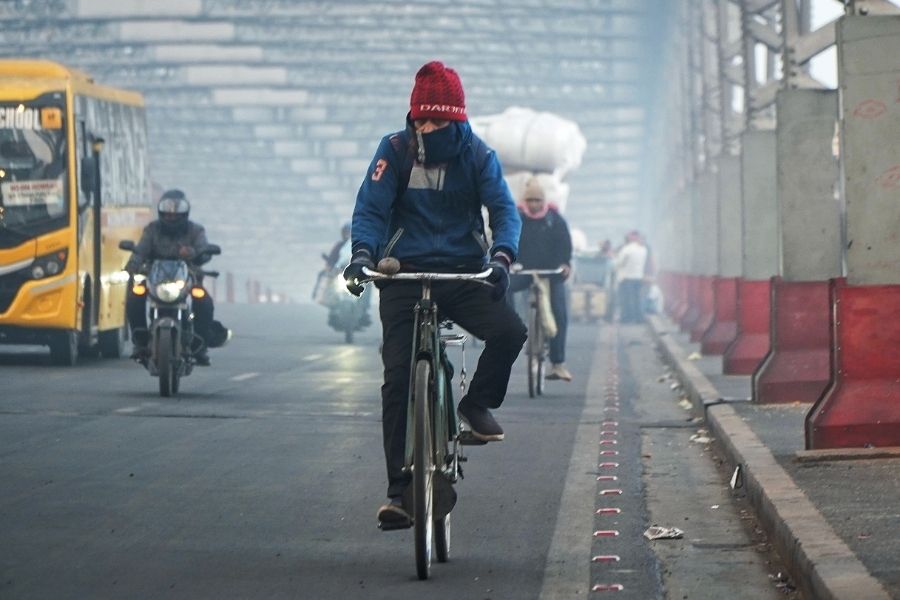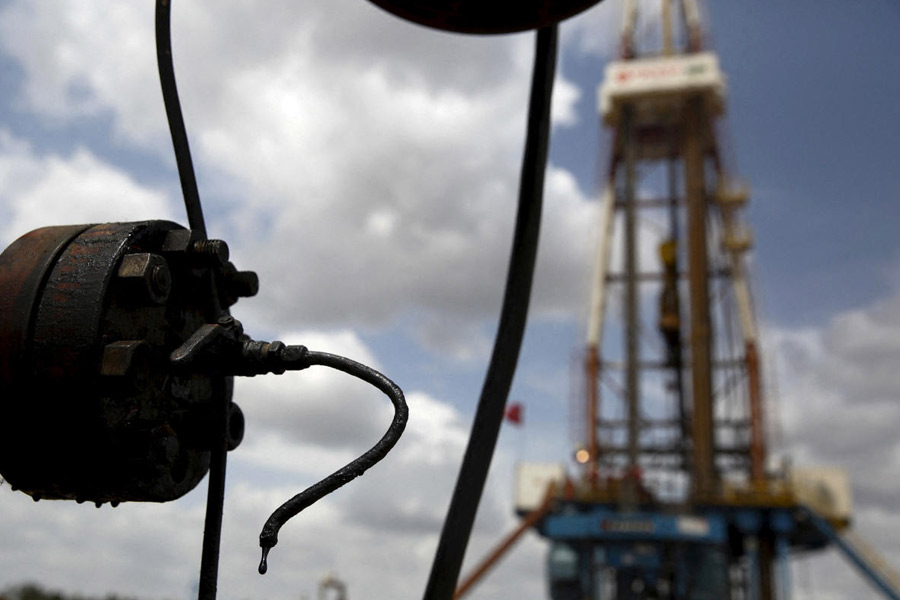 |
| TV footage shows the nuclear-powered submarine at a navy base on Sunday. (AFP) |
Nov. 9: An accidental jet of gas suffocated to death 20 people aboard a nuclear-powered, factory-fresh Russian submarine India was reportedly planning to take on lease for 10 years.
Indian defence sources denied knowledge of the lease plan but the state-owned Russian television, NTV, reported that Indian crew were expected to reach the country — possibly at the Vladivostok port —to take charge of the vessel scheduled to be commissioned later this year.
The Akula II class attack submarine is named the Nerpa but India was planning to rechristen it INS Chakra, the Russian channel said.
However, officials in Delhi said the Chakra was another vessel. Other sources said India was considering a proposal to buy an Akula class submarine that matches the description of the Nerpa.
Russian officials said in Moscow that the fire safety system on the submarine accidentally turned on as the sub was being tested, spewing toxic gas.
The Russian Navy said the submarine itself was not damaged in Saturday’s accident in the Sea of Japan and returned to its base on Russia’s Pacific coast under its own power on Sunday. The accident also did not pose any radiation danger, the navy said.
The tragedy was Russia’s worst naval accident since torpedo explosions sank another nuclear-powered submarine, the Kursk, in 2000, killing all 118 seamen aboard.
Some Indian sailors are training in Russia now. “At the moment, the submarine is a Russian vessel and all the crew members on board were Russians. The Indian Navy has nothing to do with the incident,” navy PRO Commander Nirad Sinha told PTI in Delhi.
India and Russia have been maintaining complete secrecy on the leasing of the Nerpa. Russian defence minister Anatoly Serdyukov, who was in India in September, had denied knowledge of a contract with India for leasing a nuclear submarine.
The 12,000-tonne Nerpa was said to be the deadliest, quickest and quietest of the Russian nuclear submarine fleet.
Such submarines are required by India to complete the triad of nuclear weapons delivery platforms.
Some Russian submarines are capable of carrying nuclear warheads to more than 2500km.
Overcrowding may have been a significant factor in Saturday’s accident. The submarine being tested had 208 people aboard, including 81 seamen, according to Russian navy spokesperson Igor Dygalo. Yet, Russian news agencies said a sub of this type normally carries only a crew of 73.
“A submarine is the most vulnerable during trials. With navy and civilian personnel on board, it’s very dificult to keep such a large number of people organised,” Gennady Illarionov, a retired submarine officer, said.
The victims suffocated after the submarine’s fire-extinguishing system released Freon gas, said Vladimir Markin, an official with Russia’s top investigative agency. He said forensic tests found Freon in the victims’ lungs.
Seventeen civilians and three seamen died in the accident and 21 were hospitalised after being evacuated to shore, Dygalo said.
“The submarine’s nuclear reactor was operating normally and radiation levels were normal,” Dygalo said, explaining that the accident affected two sections of the submarine closest to the bow.
Lev Fyodorov, a Russian chemical expert, agreed that the Freon pushed oxygen out, causing those inside to die of suffocation.
But he wondered why the individual breathing kits that everyone on board is supposed to have did not keep people from dying. “People on board may have failed to use their breathing equipment when they found themselves in an emergency,” he said.
Igor Kurdin, a retired navy officer who heads an association of former submariners, said the high death toll probably resulted from the presence of shipyard workers who lacked experience in dealing with the breathing kits.
“Such a catastrophic accident calls into question the way the Russian Navy has sustained its institutional knowledge in terms of design expertise, not to mention issues of quality control, both in fabrication and inspection,” Stratfor, the US-based intelligence risk assessment agency, said.










